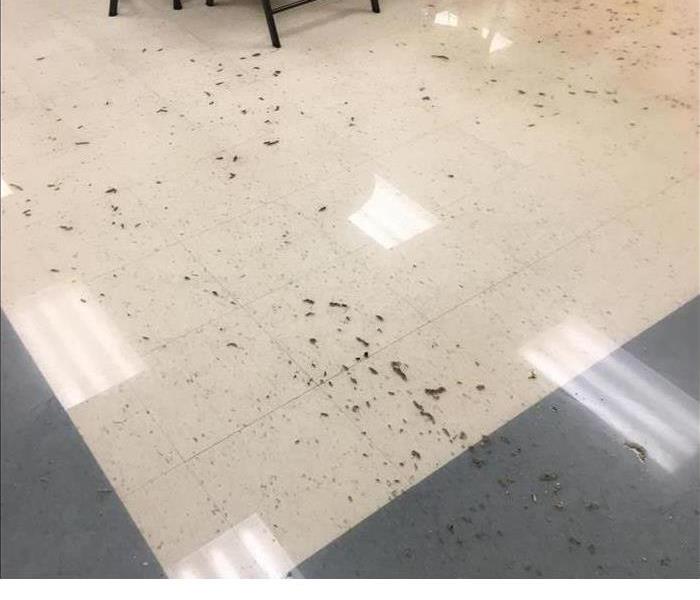Recent Storm Damage Posts
6 Tips to Prepare Your Home for a Winter Storm
2/20/2025 (Permalink)
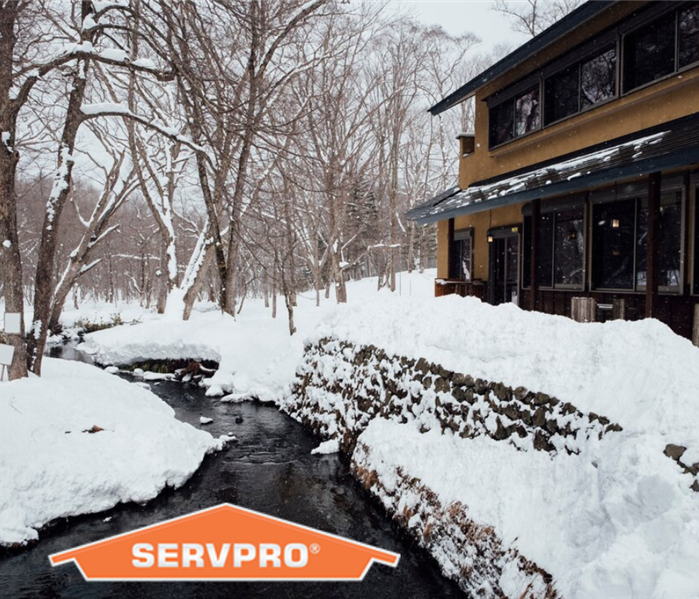 For All Your Winter Storm Damage Restoration Needs, Call SERVPRO of E. /W. Vancouver at (360) 695-4418
For All Your Winter Storm Damage Restoration Needs, Call SERVPRO of E. /W. Vancouver at (360) 695-4418
Winter storms can wreak havoc on homes this time of year, but proactive homeowners can take measures that can minimize the damage. Here are six tips to keep your home safe this winter season.
1.) Protect Your Pipes
Frozen pipes are a massive headache and can lead to significant water damage in your home. Insulate exposed pipes in unheated places such as your garage and crawlspace. It’s also recommended that you let your faucets drip and leave the cabinet doors under your sink open to allow warm air to circulate.
2.) Clear Your Gutters
Cold gutters can lead to the development of ice dams, which can cause roof leaks and structural damage to your home. By cleaning your gutters and downspouts before a winter storm, you help ensure that your home has proper drainage.
3.) Trim Your Trees
Branches overhanging your home weighted down by snow may eventually snap and damage your roof or power lines. Trim any branches from trees or bushes near your home to prevent damage.
4.) Seal the Gaps
Cold air from the outside can enter through cracks around your windows and doors, which can drive up your heading cost and lead to frozen pipe. Seal up all gaps with weather stripping or caulk.
5.) Check Your Roof
Look for any loose shingles or signs of damage on your roof. Your roof is your first line of defense against the elements outside. Also, consider getting a roof rake to remove any excess snow sitting on top of your roof.
6.) Power Up
In case of any power outages caused by a storm, have flashlights, batteries and a generator ready. Make sure to test your generator beforehand to make sure it works and know how to use it safely.
By taking these precautions, you can help your home stay strong throughout the winter storm.
However, even with the best of preparation, winter storms can sometimes cause unexpected damage. If your home suffers from water damage and any other storm-related damage, don’t hesitate to call SERVPRO of E. /W. Vancouver. We’re here to help with all your cleanup and restoration needs to get your home back to its pre-storm conditions, quickly and efficiently, like if it never happened.
10 Things for Homeowners to Note Incase of a Storm
8/29/2023 (Permalink)
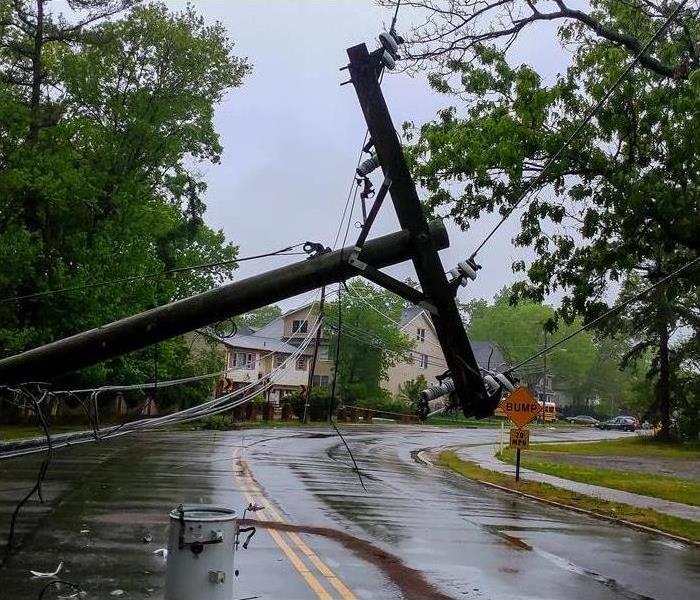 A fallen powerline in the aftermath of a storm
A fallen powerline in the aftermath of a storm
1. Storms can cause significant damage to homes, including roof damage, flooding, and fallen trees.
2. Homeowners should ensure that their roofs are in good condition and free of any damage or leaks before a storm hits.
3. It is important to secure any loose outdoor items, such as patio furniture or grills, to prevent them from becoming projectiles during high winds.
4. Homeowners should also clear gutters and downspouts of any debris to prevent water damage from heavy rainfall.
5. It is important to have an emergency kit on hand, including flashlights, batteries, a first aid kit, and non-perishable food and water.
6. Homeowners should have a plan in place for evacuation in case of severe storms or flooding.
7. It is important to have adequate insurance coverage for storm damage, including flood insurance if necessary.
8. After a storm, homeowners should assess any damage and take photos for insurance purposes.
9. It is important to hire a reputable contractor for any repairs needed after a storm.
10. Homeowners should stay informed about weather conditions and any potential storms in their area.
Basic Disaster Supplies Kit
9/13/2022 (Permalink)
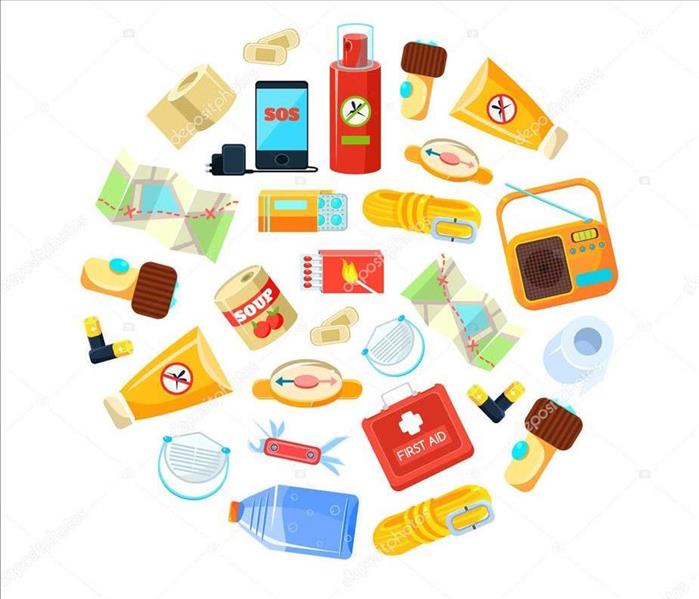 September is Disaster Preparedness Month
September is Disaster Preparedness Month
To assemble your kit store items in airtight plastic bags and put your entire disaster supplies kit in one or two easy-to-carry containers such as plastic bins or a duffel bag.
A basic emergency supply kit could include the following recommended items:
- Water (one gallon per person per day for several days, for drinking and sanitation)
- Food (at least a several-day supply of non-perishable food)
- Battery-powered or hand crank radio and a NOAA Weather Radio with tone alert
- Flashlight
- First aid kit
- Extra batteries
- Whistle (to signal for help)
- Dust mask (to help filter contaminated air)
- Plastic sheeting and duct tape (to shelter in place)
- Moist towelettes, garbage bags and plastic ties (for personal sanitation)
- Wrench or pliers (to turn off utilities)
- Manual can opener (for food)
- Local maps
- Cell phone with chargers and a backup battery
This preparedness kit information was provided by Ready.gov
Storm Preparation for your Home
7/21/2022 (Permalink)
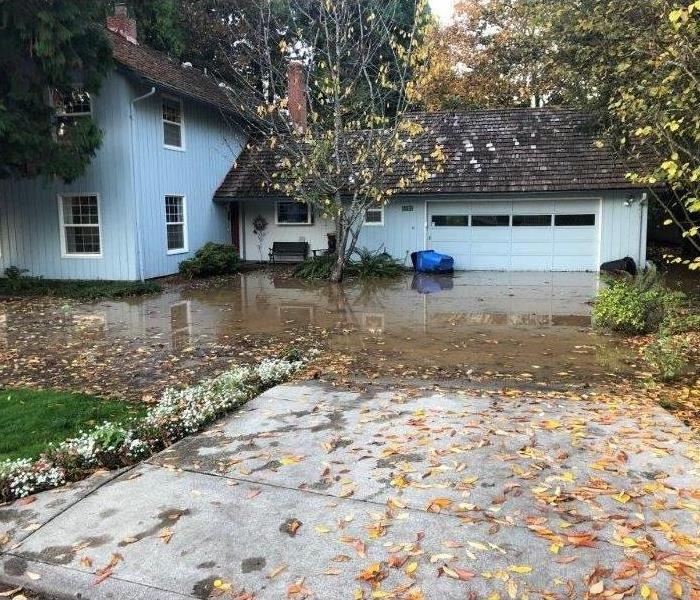 Save our number for quick reference!
Save our number for quick reference!
There are simple things you can do to minimize the impact of storms on your home and surrounding property, as shown in the following emergency planning checklist:
General home maintenance
- Check your roof regularly to make sure it’s in good condition
- Keep gutters, down-pipes and drains clear
- Remove tree branches that are close to your house
- Fix any corrosion, loose fittings and rotting or termite-affected timber
- Secure loose items around your property
General home safety preparations
- Ensure your home, contents and car insurance is adequate and current
- Identify the safest room in which to shelter during a storm
- Learn how to safely turn off your power, water and gas
- Keep water containers, a camping stove and fuel safely on-hand
If you live in a flood-prone area
- Store poisons and garden chemicals well above ground level
- Identify indoor items you’ll need to raise or empty if flood threatens
- Relocate power points well above previous flood levels
Contact SERVPRO of Vancouver/ Clark Co. TODAY to help be prepared. (360) 254-0049
After the Storm-Remediation
5/25/2022 (Permalink)
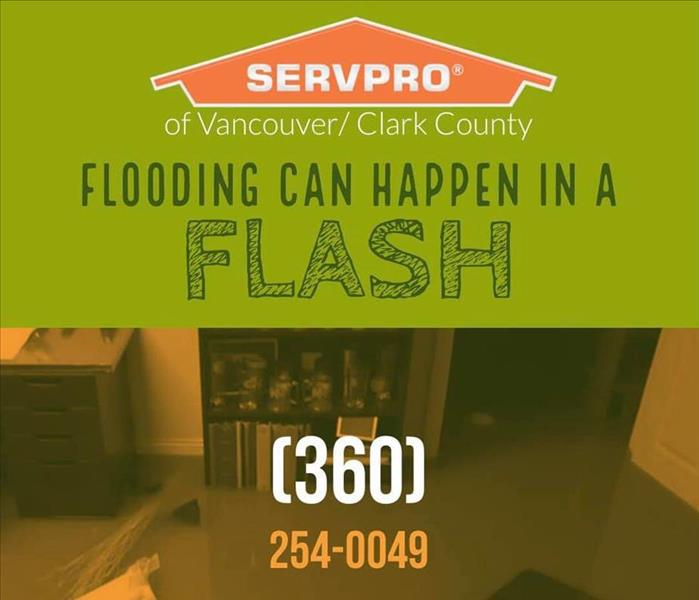 We are ready for your call! (360) 254-0049
We are ready for your call! (360) 254-0049
As homeowners in Southwest, WA, and other locations around the country are likely to attest, the clean up, repair, and restoration chores that emerge after a damaging storm are at minimum, a nuisance, and in many cases, a much more serious undertaking. Storm damage remediation can range from a clean up to a tear out to a rebuild, depending on the type and extent of the destruction.
The Usual Suspect: Water
One of the most frequent and frustrating problems property owners face is the damaging effects of water infiltration. To further complicate the challenge of inundation, floodwater from rivers and streams brings the specter of biological contamination, commonly known as black water. Once a destructive storm has passed, assessment of its damage may begin and progress to the following procedures:
- The extraction of water through pumping, mopping and dehumidification.
- Tear out of wet materials to prevent mold growth.
- Drying of the structure.
- Decontamination of salvageable materials.
- Repair and replacement of compromised building material and furnishings.
While it is true that many materials that have been subjected to black water contamination will have to be discarded, other types of water damage can be mitigated. A professional assessment can be very helpful in making the correct determination, especially with regard to the safety of the home and its furnishings.
Documentation is Vital
Document the damage before initiating storm restoration. It is likely to be necessary in filing flood insurance claims, and there may be a delay in the arrival of an adjuster if flooding is widespread. Digital pictures and/or video that can be easily emailed are the preferred media.
Humanity’s relationship to the planet’s most abundant natural resource can seem paradoxical, particularly in the midst of a tear out of the cherished furnishings of a home. Keeping water where it belongs and a balanced perspective are central to the experience of homeownership.
Generator Safety Tips
4/8/2022 (Permalink)
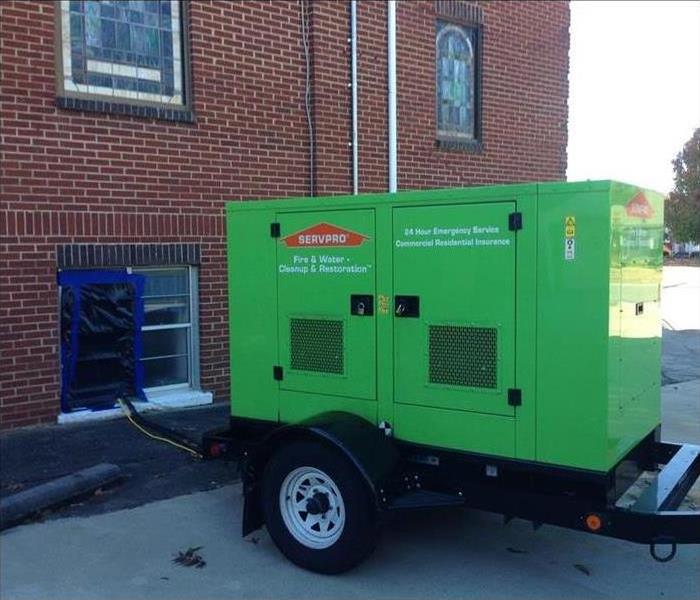 We're available to answer questions and safety concerns during severe weather. Please don't hesitate to call (360) 254-0049
We're available to answer questions and safety concerns during severe weather. Please don't hesitate to call (360) 254-0049
If you have a generator on hand for power outages during severe weather, follow the safety tips below:
- Never use a generator, grill, camp stove, or other gasoline, propane, natural gas or charcoal-burning devices inside a home, garage, basement, crawl space, or any partially enclosed area.
- To avoid electrocution, keep the generator dry and do not use in rain or wet conditions. Operate it on a dry surface under an open canopy-like structure, such as under a tarp held up on poles. Do not touch the generator with wet hands.
- Opening doors and windows or using fans will not prevent carbon monoxide (CO) buildup in the home. Although CO can't be seen or smelled, it can rapidly lead to full incapacitation and death. Even if you cannot smell exhaust fumes, you may still be exposed to CO. If you start to feel sick, dizzy, or weak while using a generator, get to fresh air immediately.
- Install CO alarms in central locations on every level of your home or property and outside sleeping areas to provide early warning of accumulating carbon monoxide.
Disaster Plan
4/8/2022 (Permalink)
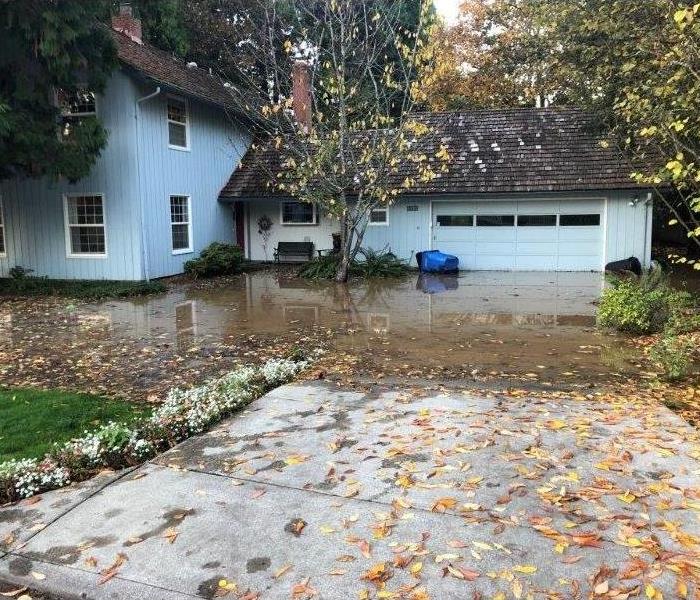 A local alert option here in Clark County is Clark Regional Emergency Services Agency (CRESA.)
A local alert option here in Clark County is Clark Regional Emergency Services Agency (CRESA.)
In recent years, many different types of disasters have affected the United States. Flooding, tornadoes, hurricanes, wildfires and blizzards are natural disasters that can threaten your home, business and community. During national preparedness month, your local SERVPRO of East Vancouver/ Clark County professionals want you to be aware of the steps to take to help prepare for mother nature’s worst.
If disaster strikes, will you be ready? It is important to prepare before disaster occurs consider the following steps to help you prepare for an emergency situation.
-Sign up for local alerts and warnings, download apps, and/or check access for wireless emergency alerts.
-Develop and test emergency communication plans.
-Assemble or update emergency supplies.
-Learn about local hazards and conduct a drill to practice emergency response actions.
-Participate in a preparedness discussion, training, or class.
-Collect and safeguard critical documents.
-Plan with neighbors to help each other and share resources.
-Document property and obtain appropriate insurance for relevant hazards.
Emergencies can happen anytime to anyone. Take action now to protect yourself and your property.
Hail Storm Damage
9/30/2021 (Permalink)
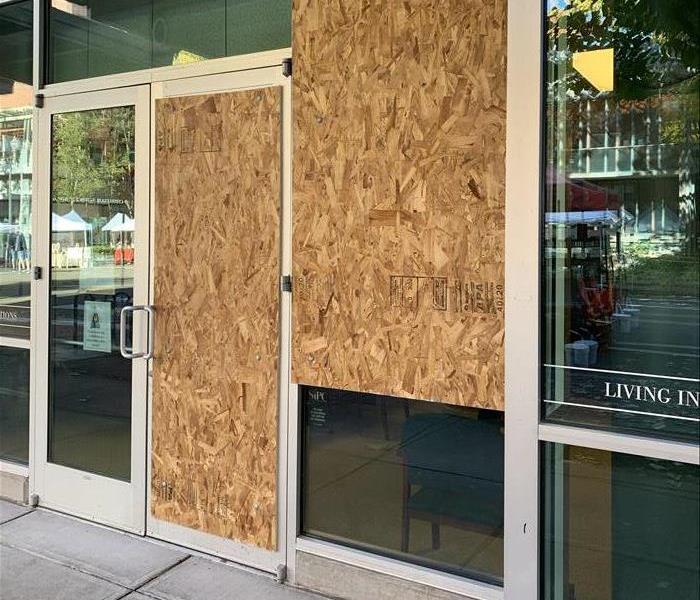 When hail damage strikes your commercial property, consider contacting a storm damage cleanup and restoration team.
When hail damage strikes your commercial property, consider contacting a storm damage cleanup and restoration team.
Although perhaps not as spectacular as flooding, tornadoes, or hurricanes, hail may be one of the most costly and damaging weather occurrences each year, according to many climatological experts. With estimates of damage in the billions of dollars, property owners and farmers face losses that only seem to grow with each passing year. Roof damage, smashed windshields, and wrecked crops are only a few of the possible scenarios in Vancouver, WA, when hail strikes.
Size Matters
Hail typically appears during a severe thunderstorm and can often range in size from half of an inch to softball size. When hail reaches about one inch in diameter, it can become capable of immense property damage. As the ice ball size increases, damage may also increase to automobiles, buildings, and machinery. When the hail size rating moves from cosmetic to functional, and finally to irreparable, the destruction may begin to affect employees and their livelihood.
Broken Windows
It is probably no surprise that water damage often follows a severe hail storm. Broken windows and roof damage are only part of the problem. As broken and hail-cracked siding allows rain to seep into the building, insulation can soak up water and cause a great deal of water damage. The same is true of missing shingles and wind-torn flashing. Torrential rain can seep beneath roofing materials and cause water to collect in attics, do electrical damage, and even result in flooding.
Finding Help
Hail can cause roof damage, but it can also cause enough destruction to close your building, and perhaps temporarily close your business. To rectify the situation, when hail damage strikes your commercial property in Vancouver, WA, consider contacting a storm damage cleanup and restoration team to help get your building open again. The team can limit further damage and reduce the building’s down time. That can ultimately save you money and keep your employees or tenants happy.
Preparing for a Storm
7/19/2021 (Permalink)
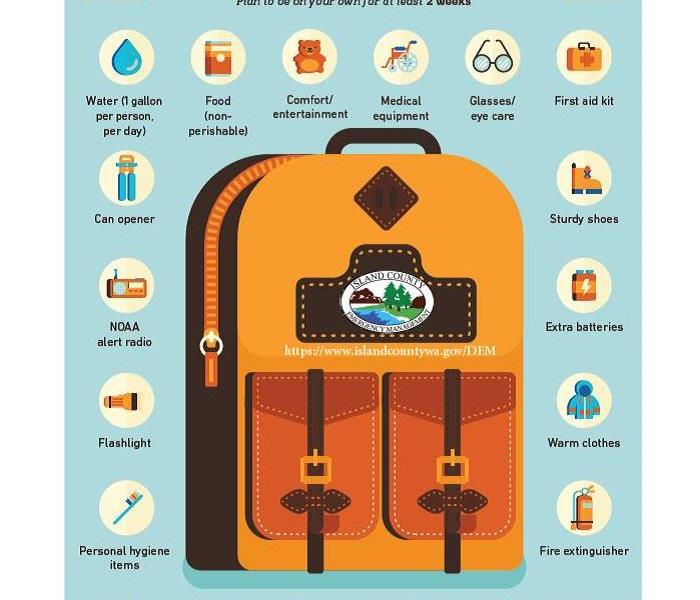 If you already have a kit, be sure to check batteries and perishables for expiration dates.
If you already have a kit, be sure to check batteries and perishables for expiration dates.
As a business owner, you know you can't prepare for every eventuality. There are too many problems that can crop up with your commercial building. However, you can prepare for some worst-case scenarios. With the help of a commercial storm damage repair crew, you can create a storm preparedness plan to help you be ready for the aftermath of bad weather. Use these four tips to get started.
1. Collect an Emergency Kit
Having a first-aid kit on hand during bad weather can give you and your employees peace of mind. Your kit should be full of bandages, blankets and nonperishable foods. Make this kit available even when you're not there to help keep everyone who uses your building safe.
2. Institute an Evacuation Plan
How should people leave the building during a storm? Create an evacuation plan for every situation that may affect your area. During flooding, for example, you may want people to go to higher ground. During a tornado, however, your employees may be better served by finding a structurally sound place inside of the building to hunker down.
3. Write Up a Contact List
You may not always be there when a storm strikes. Your employees need to know who to call if a storm damages your building. Part of good property management is creating a contact list. This can include emergency service numbers, and you may also want to include phone numbers for plumbers, storm damage remediation teams and the like.
4. Make a Backup Plan
Think about what you would do if your building can no longer be occupied. In this part of a storm preparedness plan, you may want to come up with a business continuity plan. This can include having interruption insurance or setting up a temporary office space.
You may never know how a storm is going to affect your building until it is over. You can create a storm preparedness plan to help yourself get ready for the worst-case scenario.
SERVPRO of Vancouver Here to Help with Flood Removal
7/12/2021 (Permalink)
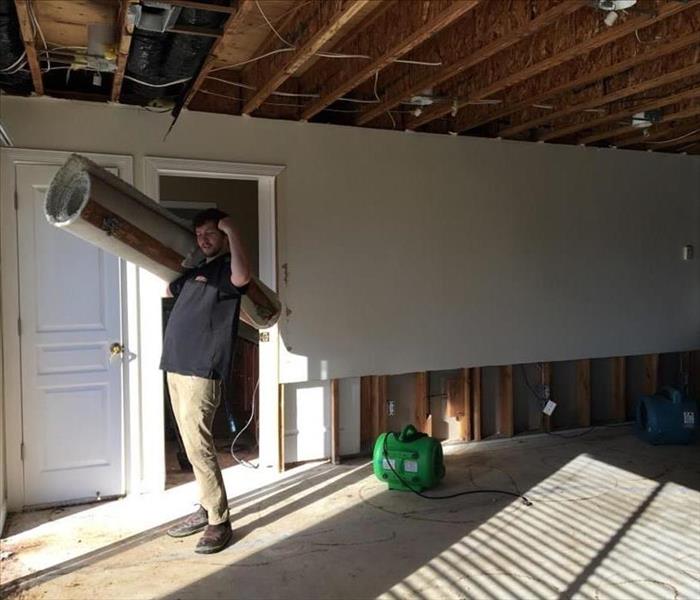 Contact us at (360) 254-0049 immediately after the waters rise so we can create the best plan for your circumstances.
Contact us at (360) 254-0049 immediately after the waters rise so we can create the best plan for your circumstances.
Water that enters a home from a storm is one of the most severe types of damage. Flash floods can happen with little to no warning, and the best thing you can do is turn off your electricity and evacuate because groundwater has a rating as a category three biohazard also known as "black water." Get cleanup efforts beginning as quickly as possible.
When SERVPRO answered a call from a homeowner who requested flood removal in their Vancouver home, our team arrived a short time after the call. The electricity was off in the house, so we used our generators to power our portable pumps and extracted the standing water that remained in the home. We scoped the rooms to determine all the areas the water migrated into so all areas that required extraction.
The sheetrock retained stains from how high the water had once been, and we used a controlled demolition technique known as a "flood cut" where we cut away damage sheetrock roughly six inches above the waterline. Unfortunately, the carpeting had exposure to black water and required removal as a water loss.
When many areas of a home receive damage from flood water, the best outcome is to get the house ready for rebuilding. Our technicians have certifications in a diverse number of restoration sciences, our goal is to restore rather than replace, but in the case of items exposed to black water, it is not always an option.
We thoroughly dry the property and monitor moisture levels within floor joists and wall cavities to ensure there are no issues with mold. Once the affected areas reach our preset drying goals, we clean and disinfect surfaces. Then we perform any needed odor removal applications.
After completion of the remediation on the property, we gave the homeowner and adjuster a report of the cleanup procedures done as well as the necessary repairs to return the property to preloss condition
Storm Damage to Your Ridgefield Home?
5/24/2021 (Permalink)
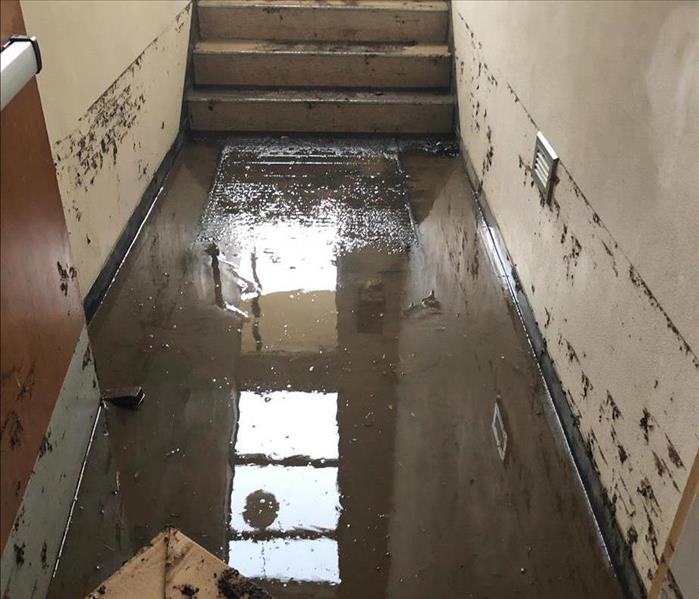 Flooding can happen in a flash! Give us a call, we can be there just as fast! (360) 695-4418
Flooding can happen in a flash! Give us a call, we can be there just as fast! (360) 695-4418
As homeowners in Ridgefield, WA, and other locations around the country are likely to attest, the clean up, repair, and restoration chores that emerge after a damaging storm are at minimum, a nuisance, and in many cases, a much more serious undertaking. Storm damage remediation can range from a clean up to a tear out to a rebuild, depending on the type and extent of the destruction.
The Usual Suspect: Water
One of the most frequent and frustrating problems property owners face is the damaging effects of water infiltration. To further complicate the challenge of inundation, floodwater from rivers and streams brings the specter of biological contamination, commonly known as black water. Once a destructive storm has passed, assessment of its damage may begin and progress to the following procedures:
- The extraction of water through pumping, mopping and dehumidification.
- Tear out of wet materials to prevent mold growth.
- Drying of the structure.
- Decontamination of salvageable materials.
- Repair and replacement of compromised building material and furnishings.
While it is true that many materials that have been subjected to black water contamination will have to be discarded, other types of water damage can be mitigated. A professional assessment can be very helpful in making the correct determination, especially with regard to the safety of the home and its furnishings.
Documentation is Vital
Document the damage before initiating storm restoration. It is likely to be necessary in filing flood insurance claims, and there may be a delay in the arrival of an adjuster if flooding is widespread. Digital pictures and/or video that can be easily emailed are the preferred media.
Humanity’s relationship to the planet’s most abundant natural resource can seem paradoxical, particularly in the midst of a tear out of the cherished furnishings of a home. Keeping water where it belongs and a balanced perspective are central to the experience of home ownership.
Storm Emergency Planning Checklist
4/19/2021 (Permalink)
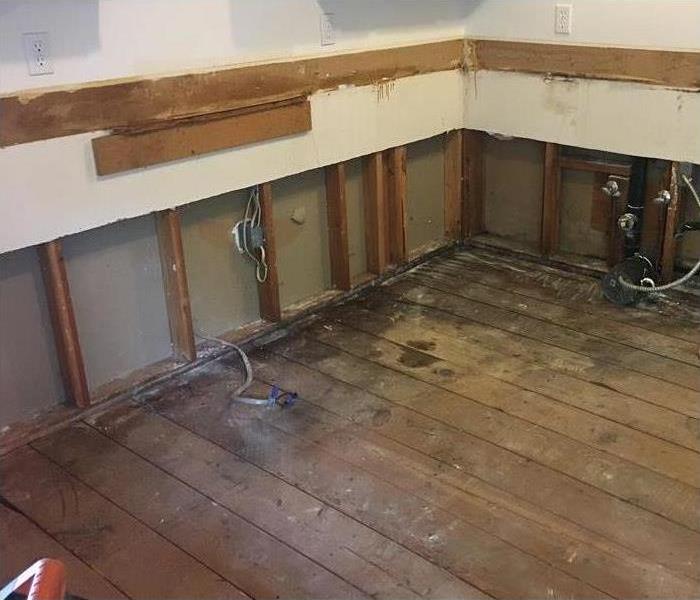 Call SERVPRO of E. Vancouver/Clark County today and let us help you put an Emergency Ready Plan (ERP) in place for your home or business!
Call SERVPRO of E. Vancouver/Clark County today and let us help you put an Emergency Ready Plan (ERP) in place for your home or business!
There are simple things you can do to minimize the impact of storms on your home and surrounding property, as shown in the following emergency planning checklist:
General home maintenance
- Check your roof regularly to make sure it’s in good condition
- Keep gutters, downpipes and drains clear
- Remove tree branches that are close to your house
- Fix any corrosion, loose fittings and rotting or termite-affected timber
- Secure loose items around your property
General home safety preparations
- Ensure your home, contents and car insurance is adequate and current
- Identify the safest room in which to shelter during a storm
- Learn how to safely turn off your power, water and gas
- Keep water containers, a camping stove and fuel safely on-hand
If you live in a flood-prone area
- Store poisons and garden chemicals well above ground level
- Identify indoor items you’ll need to raise or empty if flood threatens
- Relocate power points well above previous flood levels
Contact SERVPRO of W. Vancouver/ Clark County TODAY to help be prepared. (360) 254-0049
Weathering Storm Winds
4/12/2021 (Permalink)
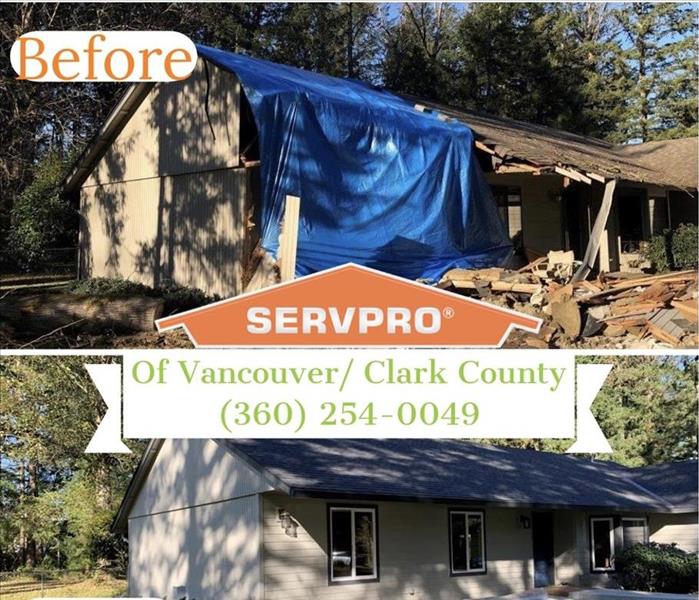 It’s up to you to prevent water damage from occurring and up to us to help navigate it when it does. Call (360) 254-0049
It’s up to you to prevent water damage from occurring and up to us to help navigate it when it does. Call (360) 254-0049
As Summer quickly approaches us, and the cold, wet, Winter weather is leaving us for a few months. Now is the perfect time to have the roof on your home or business checked out by a local roofer. Even when there was no hail or rain produced during a storm, your roof can sustain damage. Strong winds make stress points on your roof which, over time, can weaken and be compromised. Roofs are made to resist typical winds; however, they can be damaged incrementally over years of high winds and debris blown around by the wind. It is important to fix the initial damage and replace missing shingles quickly to stop any high fuel costs and water damage that inevitably result from a roof which is damaged.
The effect that the wind has over your Vancouver home’s roof is not uniform. Areas such as the perimeter and corners of your roof are more susceptible to high wind pressures and storm damage, while the center could have fewer stresses. Most wind damage begins at the edge of the roof. Anywhere the material of the roof is just a bit loose, the wind gets under it and pushes it up, therefore giving the wind more to grab onto during the next storm, which makes a peeling effect. This type of damage can begin quite small, but keep growing over time through repeated exposure to the wind.
SERVPRO of W. Vancouver / Clark Countycan be counted on to help get home or business repaired when storm damage has ravished it. With our professional training and courteous, timely work, we can help to prevent further damage to your home from intruding water by covering damaged areas with tarps or plywood for temporary protection. We then focus on restoring water damage affected areas. Our technicians may be able to do the roof repairs, but we can always get help from one of our roofing contractor partners to rebuild your roof to code when needed.
Quick Guide: Storm Damage Cleaning vs. Other Flood Cleaning
10/2/2020 (Permalink)
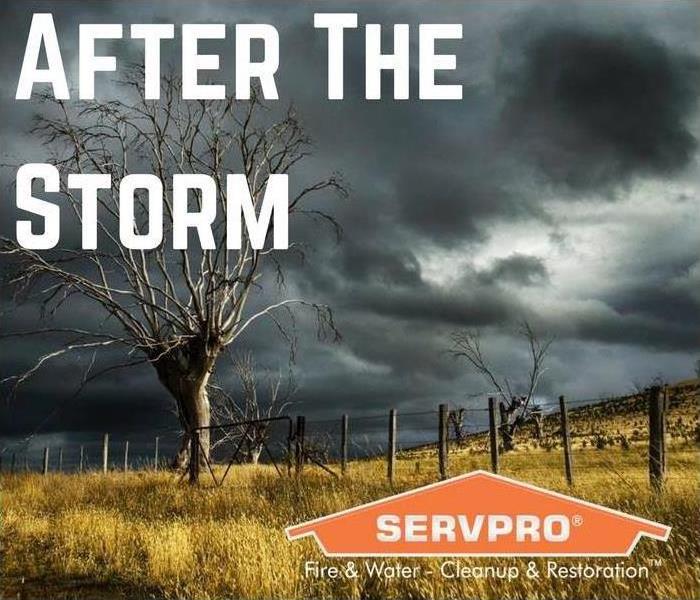 Give SERVPRO a call if you experience storm damage. We have technicians available 25/7. (360) 254-0049
Give SERVPRO a call if you experience storm damage. We have technicians available 25/7. (360) 254-0049
When storms accompanied by heavy rain pass through Camas, WA your home may be at risk for flooding. If damage does occur, working with a residential storm damage expert can make the cleanup much simpler for you. However, you may still wonder how cleaning up after a storm is different from cleaning up after a pipe burst or another source of flood water.
Storm Damage
Storm damage can include more than flood damage. You may also have to deal with disrepair caused by wind, hail and other weather elements. Because there are so many potential factors, cleaning up after a storm may require certain steps, such as the following:
• Making repairs to roofing and siding
• Using a pump to remove standing water from a house
• Drying out furniture and other possessions
• Disinfecting areas affected by flooding of potentially dirty water
• Repairing damage caused by water
• Getting rid of mold
Depending on the severity of a storm, some homeowners may even have to make structural fixes to their homes.
Other Flood Damage
Your home can have standing water for other reasons besides a big storm. Burst pipes, backed up appliances and clogged toilets could cause flood damage in your home. When this type of water source leads to a flood, the repair process is typically a little different.
First, you know the exact source of the water. This allows you to determine whether the water is clean or dirty. If you know the water is not contaminated, you may not have to disinfect your belongings after drying them out. Second, you have to find the source of the water deluge and fix the problem. If you dry out your house without fixing the source of the flood, you may have to deal with more water damage in the future.
The way your remediation team handles flooding will depend on the source of the water. Clean and dirty water have to be taken care of differently to ensure your home stays in top shape.
Do's and Don'ts of Summer Storms
7/24/2020 (Permalink)
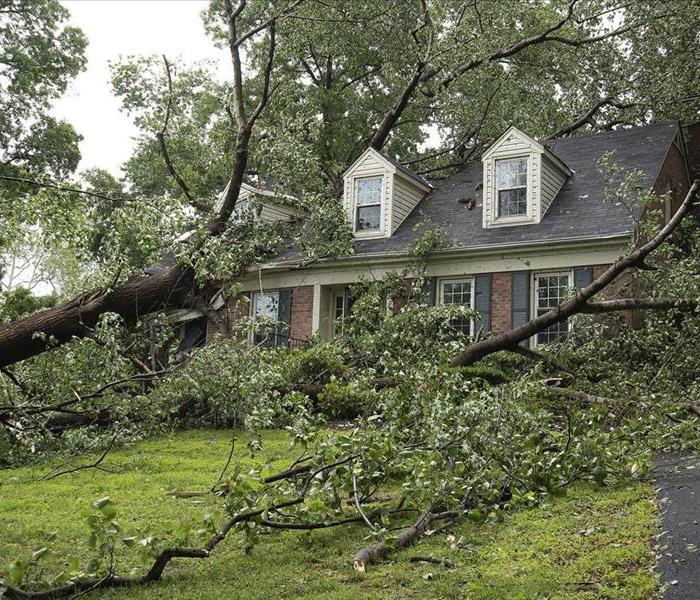 Keep you and your family safe through a storm. When in doubt, stay away from anything that may look suspicious.
Keep you and your family safe through a storm. When in doubt, stay away from anything that may look suspicious.
Floods kill an average of 140 people per year in the U.S., making flooding the most deadly disaster.
Summer storms can be beautiful to watch but also very dangerous to your home and office. In order to stay safe, please follow these and other safety tips for your home.
Before the Storm
- Have an emergency supply kit on hand
- Develop a communication plan with all members of your family
- Unplug electrical equipment
- Secure outdoor objects that could cause damage if they are thrown
- Stay inside a building or hard top vehicle
- Secure windows and doors
During the Storm
- Use a battery operated radio for updates and alerts
- Avoid contact with corded phones
- Avoid contact with electrical equipment
- Avoid contact with water
- Stay away from windows and doors
After the Storm
- Do not touch any downed wires
- Do not drive through a flooded roadway
- Stay away from storm damaged areas
Staying Safe During a Lightning Storm
7/10/2020 (Permalink)
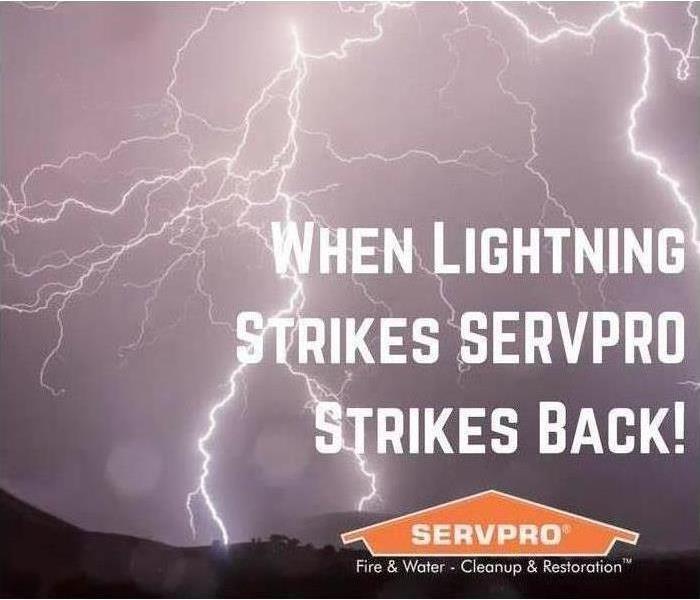 If a storm or other disaster has affected your home, give us a call at (360)254-0049, We’re Here to Help!
If a storm or other disaster has affected your home, give us a call at (360)254-0049, We’re Here to Help!
During a thunderstorm or severe weather event, lighting can be a very dangerous situation for you and your loved ones. According to the National Weather Service, there is a great deal of information to be aware of, and many precautions that you can take, to help protect yourself from being struck by lightning:
Lightning- What you Need to Know:
- If you hear thunder, lightning is close enough to strike you.
- If you hear thunder, move to an enclosed space, such as a building or metal topped vehicle for shelter: no place outside is safe during a thunderstorm.
Lightning Safety Once Indoors:
- Stay off electronic equipment, such as computers or corded phones, that put you in direct contact with electricity.
- Avoid plumbing, such as sinks and bathtubs, as metal piping can transmit electrical current.
- Stay away from windows and doors; the safest area of the building is an interior room.
- Do not lean against concrete walls or lie on concrete floors.
Lightning Strike Outdoor Risk Reduction Tips:
If you find yourself outside with no shelter option during a lighting storm, the following actions can help reduce the risk of injury from a lightning strike:
- Search for lower ground- Avoid hills, cliffs, mountains, or any other natural structure elevates you.
- Immediately get out of and away from all bodies of water.
- Stay away from objects that can easily conduct electricity, such as metal fences and power lines.
- Never seek shelter under an isolated tree, as the tree can serve as a conductor for a lightning bolt.
SERVPRO of Vancouver/ Clark County values the safety of our community members and we hope these tips help protect you and your family.
Storm Damage Cleanup and Restoration
5/26/2020 (Permalink)
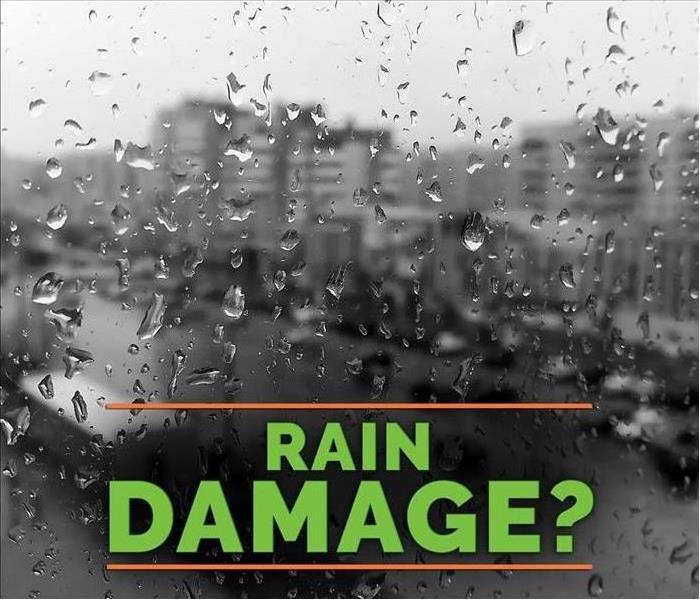 Have Storm or Flood Damage?
Call Us Today (360) 254.0049
Have Storm or Flood Damage?
Call Us Today (360) 254.0049
- 24 Hour Emergency Service
- Faster to Any Size Disaster
- Highly Trained Water Technicians
- A Trusted Leader in the Water Restoration Industry
- Locally Owned and Operated
Restoring storm and flood-damaged properties is the cornerstone of our business at SERVPRO of East and West Vancouver and it has been for nearly 30 years. Our highly trained professionals use specialized equipment and advanced training to quickly restore your property to pre-storm condition. We’re dedicated to responding immediately, no matter the time or the day. Our crews are ready 24/7, 365. Immediate action helps to minimize secondary damage from water being absorbed into more materials and affecting more of the property. SERVPRO of Vancouver is ready to help you make it "Like it never even happened."
Thunderstorm Damage
5/1/2020 (Permalink)
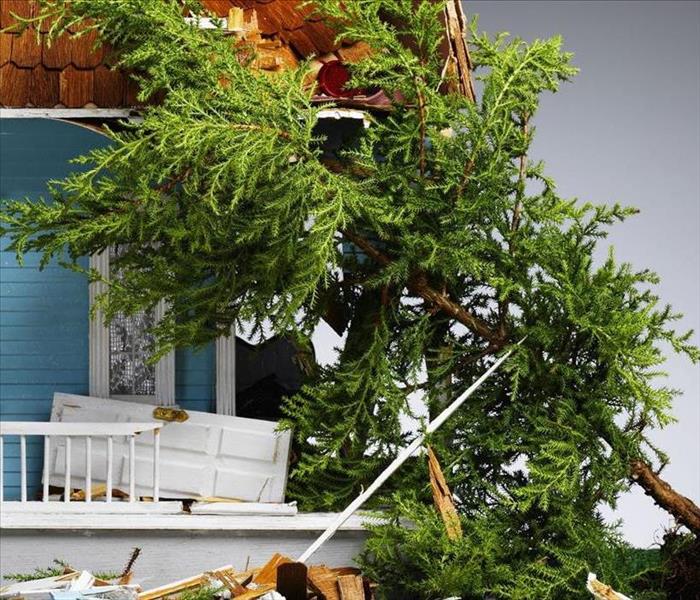 Call a company you can count on.
Call a company you can count on.
We all know that thunderstorms can cause major damage to your homes.
But who do you call when the clouds roll out?
SERVPRO has been fixing storm-damaged homes in the Vancouver/ Clark County area for quite some time. Our highly trained technicians are qualified to handle just about anything wicked storms can throw at them.
We have the experience, training, and equipment to handle a small flood to massive windstorm damage resulting in fallen trees in your roof, water damaged floors and even fire damage caused by lightning.
Why trust the process of putting your home and sometimes your life back together to any old man in a van with a fan? SERVPRO is licensed and insured to give you the ultimate peace of mind that you are in good hands.
Call us today (360) 254-0049
Tornado Watch VS. Warning
5/1/2020 (Permalink)
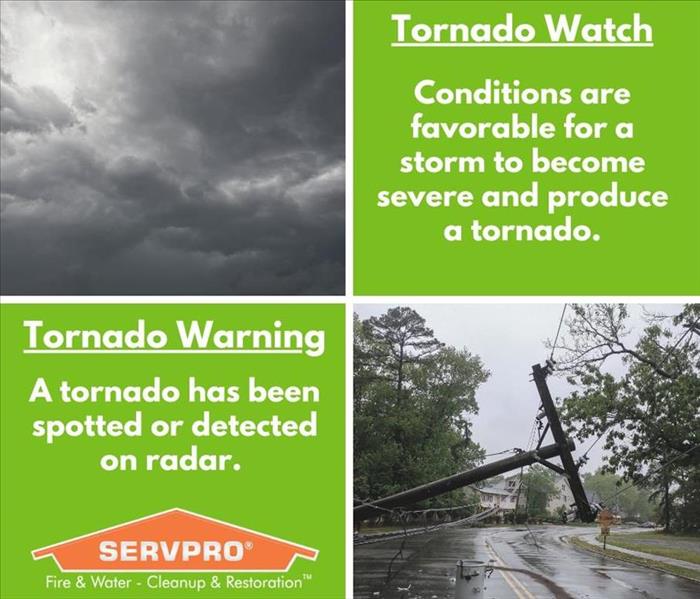 Tornadoes don’t touch down often in the Pacific North West but aren’t unheard of. Call a company you can trust for storm related services.
Tornadoes don’t touch down often in the Pacific North West but aren’t unheard of. Call a company you can trust for storm related services.
Call SERVPRO of Vancouver/ Clark County for your storm cleanup needs.
As we go further into spring, we can expect more heavy rains to come our way before summer arrives. In order to know how to be prepared for storms, we also have to know when to be prepared.
Tornado WATCH
A tornado watch means that the potential exists for the development of a tornado. A watch is issued by the SPC (Storm Prediction Center).
Tornado WARNING
A tornado warning means that a tornado has occurred or is imminent based on doppler radar information or a reliable spotter report. A warning is issued by the local National Weather Services.
How Can SERVPRO Help?
Unexpected emergencies like severe weather call for immediate action. SERVPRO of Vancouver/ Clark County is the professional team near you that knows that immediate reaction to the disaster is important to helping you get your life back to normal.
Utilizing our 1-4-8 Service Response Guidelines*, we strive to:
• Contact you within 1 hour from notice of loss to arrange for service.
• Be on-site to begin mitigation services within 4 hours of notification.
• Provide verbal briefing of scope to you within 8 business hours of on-site arrival.
SERVPRO of Vancouver/ Clark County can also perform pack-out services, which is removing salvageable personal property from the affected area for off-site cleaning and storage.
Call (360) 254-0049 for your storm damage needs.
Watch vs. Warning information is provided by NOAA (National Oceanic and Atmospheric Administration)
Weather Safety Tips
10/7/2019 (Permalink)
Severe weather can happen anytime, anywhere. Each year, per NOAA.gov, Americans cope with an average of the following intense storms:
*10,000 severe thunderstorms
*5,000 floods or flash floods
*1,300 tornadoes
*2 landfalling deadly hurricanes
Approximately 98% of all Presidentially declared disasters are weather-related, leading to around 650 deaths per year and nearly $15 billion in damage. Knowing your risk of severe weather, taking action, and being an example are just a few steps you can take to be better prepared to save your life and assist in saving the lives of others.
KNOW YOUR RISK: The first step to becoming weather-ready is to understand they type of hazardous weather that can affect where you live and work, and how the weather could impact you, your business, and your family. Check the weather forecast regularly, obtain an NOAA Weather Radio, and learn about Wireless Emergency Alerts. Severe weather comes in many forms, and your shelter plan should include all types of local hazards.
TAKE ACTION: Take the next step in severe weather preparedness by creating a communications plan for your home and business. Put together or purchase an emergency kit. Keep important papers and valuables in a safe place.
BE AN EXAMPLE: Once you have taken action to prepare for severe weather, share your story with co-workers and family and friends on Facebook & Twitter. Your preparedness story will inspire others to do the same.
What Vancouver Flood Damaged Big Ticket Items are Restorable?
7/30/2019 (Permalink)
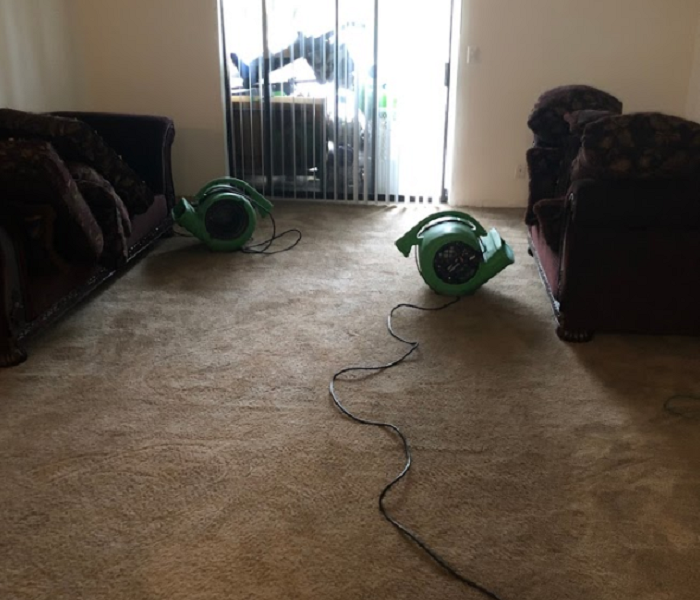 We had to remove furniture and flooring to dry this home. Some furniture was salvageable, but some required discarding.
We had to remove furniture and flooring to dry this home. Some furniture was salvageable, but some required discarding.
Handling Large Items Damaged by Flooding in Vancouver
One of the most damaged items in a Vancouver home is the flooring. Everyday wear and tear already compromise carpets and rugs. Its position makes soiling inevitable, and disasters only place more of a burden on a home's floors. Other furnishings in a home also suffer during a disastrous event. SERVPRO helps families recover by restoring their home and its contents.
After the water drains away from your house in Vancouver, seeing the flood damage's extent becomes possible. Some things we can more easily restore, while other items require disposal. Many items fall in between these two ranges. Then, the customer and the insurance adjuster should discuss the replacement costs and the expense involved with restoration, along with the likelihood of success.
Carpeting is one component of the typical home that rarely survives the flood. The work required to bring it up to adequately safe condition again, coupled with the need to replace the pad, dry the sub-floor, and remove any discoloration can become extensive. However, we regularly restore damaged rugs, including larger ones, which helps to bring back the personality of the customer's home.
Other significant items that carry a higher price tag include many furniture items. When flooding happens and saturates the wood and upholstery, we need to dry these, get them deodorized, and treat them to eliminate any pathogens. Cleaning the upholstery also removes sand, soils, and chemicals that flooding draws into your house. We treat wood, including frames, trim, and entire pieces with unique oil treatments that prevent splitting. Cracking along the grain and warping commonly happens in items that become too dry after a period of saturation.
One exception to furniture that we can salvage after a flood is your family's mattresses. We do try to save box springs, but many places only sell mattresses when the customer also purchases a box spring. While we can restore the frame in most situations, the mattress, poses more risks than what restoration saves you. Tall cabinets, wardrobes, and other items need to be wiped down, dried and then deodorized.
Appliances often become so waterlogged during a flood that restoring them becomes futile. While the interior might seem cleanable, we cannot reach into the sealed compartments found in so many modern appliances. Insulated doors on refrigerators can lose the ability to keep food cold, as well as become a breeding ground for all types of pathogens. Interior parts on stoves can rust, becoming fire hazards. Other household items can pose electrical hazards. Replacing them becomes the safest option, and SERVPRO can correctly dispose of these for you.
Restoration of a home with flood damage means getting everything back how it was before, "Like it never even happened." SERVPRO of W. Vancouver / Clark Co. has the resources and skilled technicians to make this a reality for your family. After flooding affects your home in Salmon Creek, Ridgefield, or La Center, call us at (360) 695-4418 for fast service from a reliable team.
More about Vancouver.
We Are Available 24/7 For Your Vancouver Flood Damage Restoration Services
7/16/2019 (Permalink)
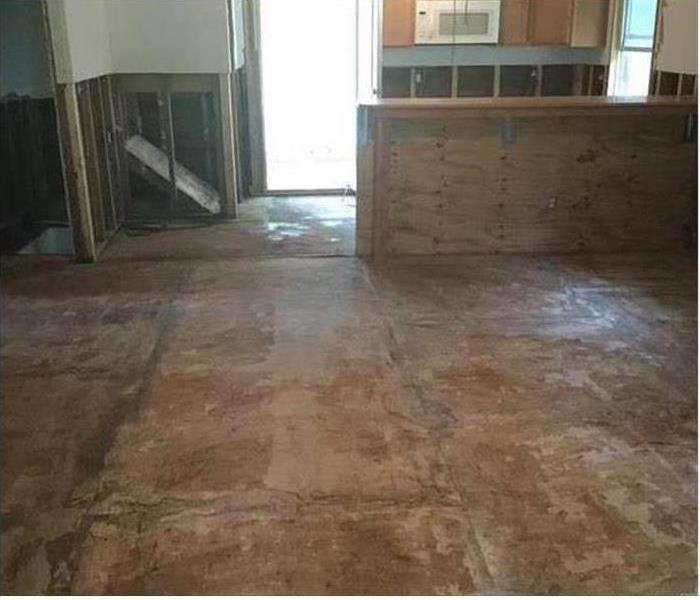 Contaminated black water usually means a controlled demolition of the affected materials in a Vancouver home.
Contaminated black water usually means a controlled demolition of the affected materials in a Vancouver home.
Can You Stay in Your Vancouver Home After Flood Damage?
Flooding can produce harmful and even dangerous conditions for Vancouver residents depending on the severity of these disasters inside of a house. While no family wants to relocate or become displaced when flood damage occurs, an assessment of the severity and the apparent risks by professionals must occur to determine if staying in the house is a viable option. Understanding potential hazards and risks can help you to appreciate not only your need for professional restoration services, but also how your family and pets can become affected.
The more severe the flood damage in Vancouver homes, the more widespread its effects can be within a property. Instead of affecting a single room, powerful moving water or breaches to areas like your roof or exterior walls can allow unabated water flow that can move quickly from one point to another in the house. Even with the fast response that you can expect from our SERVPRO professionals when contending with flooding, much of our restoration efforts are reactions to existing conditions when our team first arrives at the property.
Some homes only have limited exposure, such as flood damage that originates in the attic where mitigation work can begin quickly. Containment efforts and effective drying solutions can prevent the spread of these damages to lower levels, so it is possible in some of these scenarios for families to remain in the home during the restoration and recovery efforts.
Unfortunately, there are also widespread circumstances in which contamination becomes a legitimate threat. In these situations, even with a lower threshold for affected areas and overall damage, the safest approach is to encourage homeowners to seek temporary accommodations elsewhere until our SERVPRO professionals can successfully disinfect and begin drying out damages.
While it can save you money to not have to seek out temporary housing for your family during an already traumatic experience, in certain situations, it is unavoidable. You can trust in the fast turnaround and quality output of our SERVPRO of W. Vancouver / Clark Co. team to get you back in the house quickly. Give us a call whenever disaster strikes at (360) 695-4418.
See more about Vancouver.
Vancouver Property Owners Shout Out to SERVPRO for Flood Water Removal and Mitigation
5/21/2019 (Permalink)
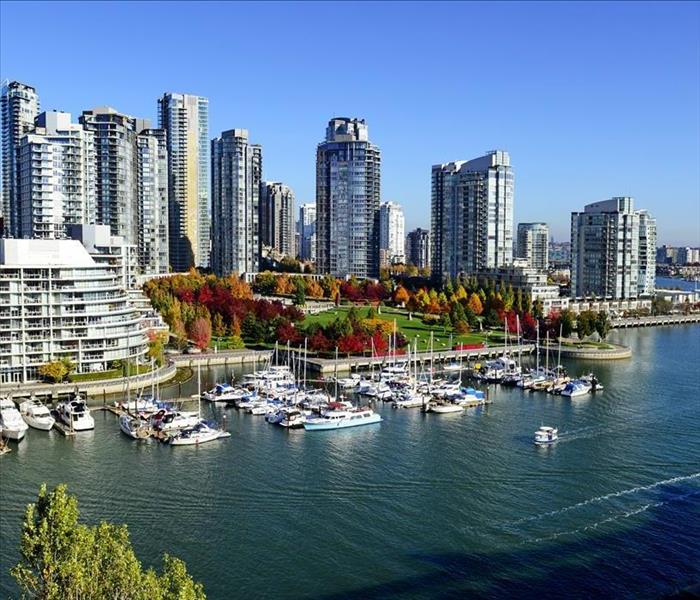 SERVPRO Mitigates Flood Damaged Structures in Vancouver, "Like it never even happened."
SERVPRO Mitigates Flood Damaged Structures in Vancouver, "Like it never even happened."
Adverse Weather Conditions Leading to Flood Damage in Vancouver
During specific periods of the year, your home can be at risk of flooding. Frequently caused by heavy rainfall or road overflow, flood waters can be perilous; as little as two feet of flood water can uproot trees and flip vehicles. When water enters your home, it carries with it any pathogens it may have come into contact with as well as any loose debris. Your structural contents, including windows and doors, can also be damaged.
We run an emergency assistance service for flood damage in Vancouver. Our technicians are available on call during times of the year when adverse weather conditions are most likely. By making ourselves available in this way, we can visit sites to perform vital mitigation and safety tasks that could avoid the necessity of expensive replacements whenever possible.
As a SERVPRO fire and water damage cleanup company, we can enter your property to perform necessary safety checks. We test ceilings or floorboards for structural weakness, provide portable electrical power to the property as well as marking any potential hazards like loose wiring. Also, our team can perform emergency board ups to prevent your property from being at risk of theft or foul weather while work is ongoing.
Another essential duty of a restorer is to mitigate loss. SERVPRO technicians are certified by the Institute of Inspection, Cleaning, and Restoration Certification (IICRC). IICRC qualifications help us to act quickly and prevent permanent damages. That could include performing emergency drying for items of furniture or pumping large amounts of water out of the property to avoid damages to hardwood floors or fittings. We arrive with truck-mounted pumps, portable and submersible pumps, and wet-vacs with special wand attachments to quickly extract any standing water.
In severe flood-related damages, you may find contaminated grey or black water. In the case of a road overflow, the presence of raw sewage is likely. Our service offers BioHazardous waste disposal to help clean, disinfect, and clear your property as well as removing any contaminated materials such as drywall or carpet.
Our emergency services team could help you mitigate loss, contact SERVPRO of W. Vancouver / Clark Co. at (360) 695-4418 today.
Click for more about our beautiful city.
Storm Damage Cleanup and Restoration
5/1/2019 (Permalink)
 When disaster strikes, let SERVPRO of W. Vancouver / Clark Co. make it "Like it never even happened".
When disaster strikes, let SERVPRO of W. Vancouver / Clark Co. make it "Like it never even happened".
SERVPRO of W. Vancouver / Clark Co. has experience restoring homes affected by storms and flooding. We can respond immediately with highly trained technicians who employ specialized equipment and techniques to restore your home or business back to pre-storm condition.
Why Choose SERVPRO of W. Vancouver / Clark Co.?
We're Faster to Any Size Disaster
Floods and storms don’t wait for normal business hours, and neither do we. You can depend on an immediate response from our highly trained technicians, who are available 24 hours, seven days a week.
We're Highly Trained Storm Damage Specialists
As a leader in storm and water damage restoration, SERVPRO of W. Vancouver / Clark Co. has the specialized training and expertise to restore your home back to its pre-storm condition. Our restoration process puts an emphasis on scientific drying techniques, progress monitoring and documentation.
- Water Damage Restoration Technician
- Applied Structural Drying Technicians
We Have the Resources to Handle Storms and Disasters
Major storms and flooding events can overwhelm many restoration companies. On the other hand, SERVPRO of W. Vancouver / Clark Co. can access resources from 1,700 Franchises across the state and country and even utilize Disaster Recovery Teams for major storms and disasters.
Flooded? Don't Let Mold Take Hold
4/24/2019 (Permalink)
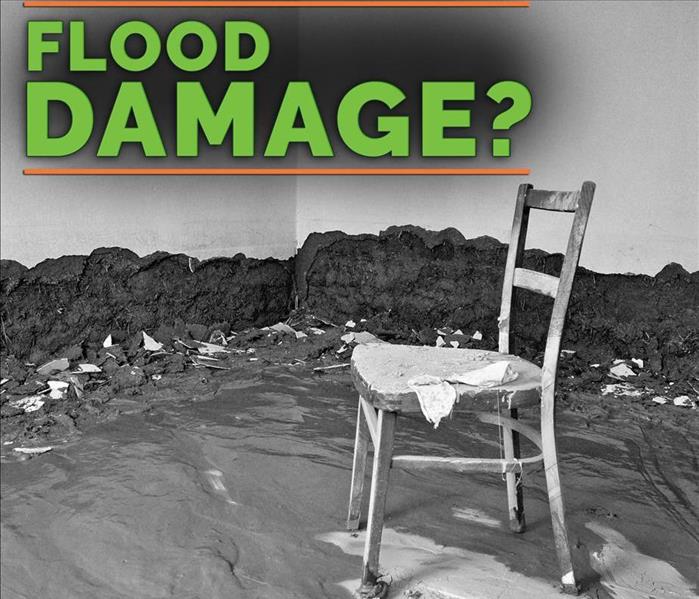 Acting quickly in any aerea that has flooded can prevent the opportunity of mold growth.
Acting quickly in any aerea that has flooded can prevent the opportunity of mold growth.
Steps To Act Quickly To Prevent Mold Growth After A Flood
Storm flooding can occur in Pine Grove, WA, without much warning. It is crucial to act quickly to clean up flood water in order to prevent mold growth. Even small amounts of moisture can allow mold to grow, so it is important to get help from an experienced professional who will assess the extent of water damage, remove the water, and ensure that affected materials are completely dry.
1. Assessing the Damage
Water damage may be apparent, but moisture is often invisible. If you don't address excess moisture levels quickly following a flood, you risk needing mold removal down the line.
An experienced storm damage restoration specialist has the knowledge and equipment necessary to detect water levels in porous building materials where moisture can hide. He or she can restore your house to its pre-flood condition, whether that means drying or replacing the material.
2. Extracting the Water
Any area that has flooded can have water removal challenges. Specialized machinery may be needed to remove standing water and extract it from carpets, furniture, and walls. Such equipment may include submersible pumps and powerful wet/dry vacuums. These machines generally will be able to remove most, but not all, of the flood water from your home. At this point, there is still an opportunity for mold growth until moisture has been reduced to acceptable levels.
3. Eliminating the Moisture
To eliminate excess moisture, you'll need a professional to detect where it remains and equipment to dry it. Moisture detectors such as hygrometers and infrared cameras can find water in unexpected places, such as behind walls and underneath carpet. Dehumidifiers and industrial fans help extract moisture from materials and move it out of the building. Moisture levels should be rechecked until they have reached levels low enough to inhibit mold.
Act quickly to ensure that you prevent mold growth following a flood. An experienced professional can help you to assess the extent of water damage, extract the water, and ensure that all moisture has been properly dried.
What to Know About Restoration and Your Company
2/14/2019 (Permalink)
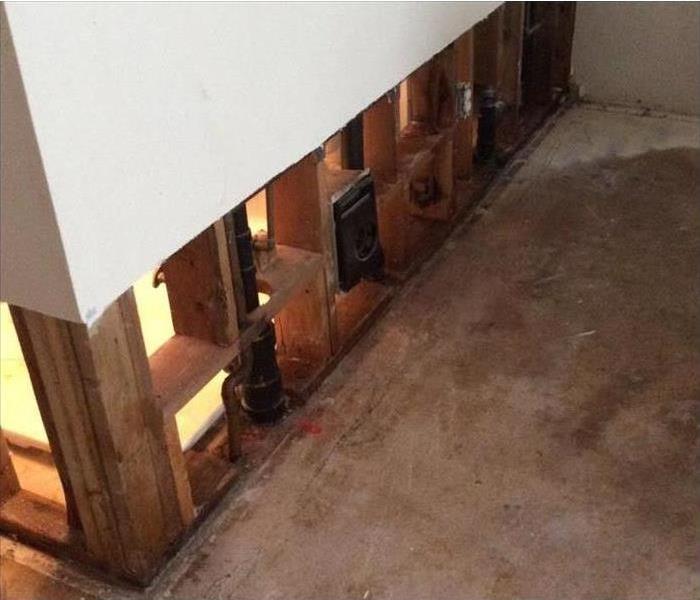 Storm damage in Sara, WA
Storm damage in Sara, WA
When your company in Sara, WA, experiences flooding and contamination by black water, your staff may wonder if it's safe to come to work during the restoration process. Many restoration experts recommend staying away from the building during certain steps in the process, however, staff may be able to return to work sooner than expected.
The Business Building May Need to Stay Closed for Some Steps
Many damage and restoration professionals recommend either closing or moving business off-site while certain repairs are underway. These restoration steps may include
- Water removal
- Decontamination of the affected area
- Necessary demolition or cutaway work
- Mold remediation efforts
Some Tasks Can Be Performed from Alternate Locations
While the company building is cleansed of black water and then decontaminated, some parts of your business may be able to continue from an alternate location. If your business’s electronic files are backed up onto a server, then your IT company may be able to set you up on an alternate computer. Phone calls may be able to transfer to a different line, and some employees may be able to work from home.
When it May Be Safe to Return
After the flood cleanup, staff may be allowed to return to parts of the building that are not under construction. Air filtration devices may still be in use to improve air quality while restoration efforts are underway. There may also be some areas of the building that are inaccessible until repairs are complete. However, with the permission of the restoration company, employees can get back to work.
During a black water cleanup at a place of business, it's important to remember that because of certain steps in the restoration process the building may need to remain closed for repair. Fortunately, the company may be able to perform some tasks off site. After any damaged material and water has been removed, staff may be allowed to return to the building and resume work.
What Do You Need To Know About Cleaning Belongings After Flooding?
9/19/2018 (Permalink)
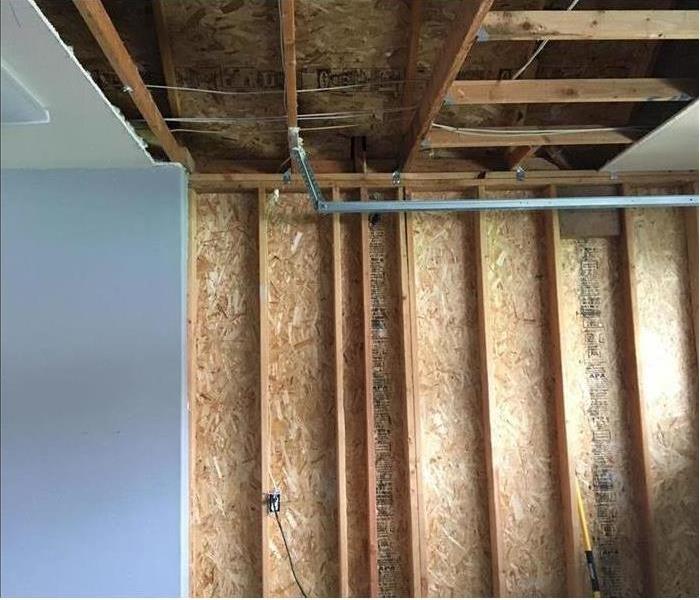 Roof damage after wind storm in Hazel Dell, WA
Roof damage after wind storm in Hazel Dell, WA
After a storm passes through Hazel Dell, WA, you may need to make some repairs to your house. This is especially true if the bad weather caused water to fill your space. However, repairing the structure of your house isn't all you'll have to do. You will have to start a content cleaning procedure if you want to repair and keep any of your possessions. Your residential storm remediation team can help with this task. You can also check out the following three tips for even more help through this unexpected situation.
- Not everything can be saved. While you may want to keep as much as possible, some items cannot be saved after they are affected by a flood. The waters brought into your home may include contaminants that leave your belongings beyond repair. Even if the water that filled your house came from a clean water source, porous items may be too waterlogged to get properly cleaned. You will have better luck cleaning nonporous belongings.
- Electronics require special consideration. Before you try to power on your computer or television, you need to make sure it is ready to get used again. If you do not properly clean electronics after they are filled with black water, you may end up doing even more damage to the device. Most electronics need to be cleaned by a specialist.
- The dry-out process is important. Not only do you want to make sure all of your possessions are properly cleaned, but you also have to take the time to dry everything out. If you undertake content cleaning, but forgot the proper drying out procedures, you may introduce mold spores and other contaminants back into your house.
When your home is flooded by storm waters, you may have a wide range of repairs to make to your house. If any of your belongings are affected, you may also have to do some content cleaning to get your Hazel Dell, WA, house back to normal
Important Watertight Features of Your Building
8/21/2018 (Permalink)
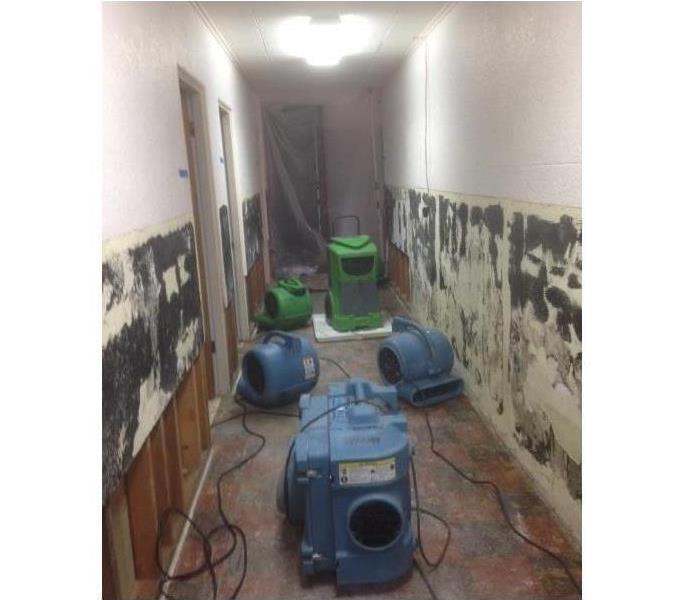 Air mover on a commercial storm damage in Cherry Grove,CA
Air mover on a commercial storm damage in Cherry Grove,CA
If you expect your Cherry Grove, WA, building to keep water out during a storm, you need to make sure it is watertight. A leaky roof, for example, can lead to rain damage even in the mildest of storms. As you try to figure out how to keep water out of your commercial property, you need to think about the watertight elements, including the following:
Checking out these features before the stormy season can help you reduce the need for a commercial restoration specialist.
Roofing
This system acts as the top layer of your building envelope. Not only do the shingles play a role in keeping moisture from seeping into your building, but so does the underlayment, edging and roof deck. You need to make sure every component of your roof is in top shape to ensure your property is at its best.
Siding
The siding and sheathing work together to create a watertight barrier around the sides of your building. Cracked or warped siding could allow rain damage to affect your property. Even a loose board could spell disaster if the wind gets strong enough to rip it off.
Windows
The doors and windows of your property act as a vulnerable point. Rain may be able to pool along the frames of the fixtures if they are not properly installed. When water seeps through the frames, you may end up with black mold growth in places you don't want it. Before a storm hits, you need to check each window and door to make sure the weather stripping is in good condition. You could also check the panes and jambs for signs of defect.
The building envelope helps keep the rain damage to a minimum. If any part of this system is damaged or missing, you may end up with a lot of water in your space after any storm. It may be beneficial to hire a professional inspector.
Making a Flood Damage Claim
7/24/2018 (Permalink)
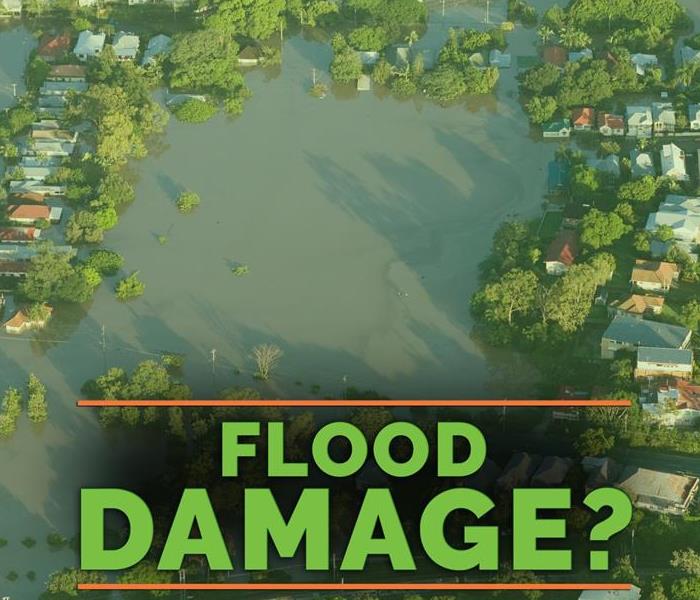 Unless you live in an area prone to flooding, it is likely that a flood claim will be a once-in-a-lifetime event.
Unless you live in an area prone to flooding, it is likely that a flood claim will be a once-in-a-lifetime event.
In the event that you have to make a flood claim in Vancouver, WA, following a storm, knowing how the process works will make a challenging situation a bit easier to endure. It is in your best interest to move quickly to contact your insurance adjuster, particularly when damage is widespread throughout your locality.
Begin Remediation Immediately
After you have notified your insurance company that your home has sustained flood damage, get to work right away on your own or by engaging the services of professionals to address it. Mold can begin to grow within 24 to 48 hours after inundation, so your adjuster will understand the need to move quickly.
• Take lots of digital photos and videos to document the damage to your home and property.
• Remove, but do not yet discard, materials that cannot be salvaged.
• Remove excess water by pumping, mopping and blotting to prevent further harm to your home.
• Get the air circulating with fans and air conditioners, and as a last step, dehumidifiers.
• Be sure to inspect, and work to dry, hidden areas where mold can grow.
• Begin the cleaning process for belongings that can be salvaged.
• Compile a list of losses and include any receipts you have retained. Your credit card history can be useful for the task of filing out an accurate flood claim.
• Keep receipts for any purchases of goods or services related to the flood.
• Sign the proof of loss statement that your adjuster produces. Additions can be made if necessary for the insurance claim.
It is important to understand that both the restoration of your home and the settlement of your insurance claim will be processes that require time, effort and patience.
Unless you live in an area prone to flooding, it is likely that a flood claim will be a once-in-a-lifetime event. Accurate documentation is the key to fair compensation. For more information, visit http://www.SERVPROwvancouverclarkco.com/.
Your Rights as a Tenant Post-Flood
6/13/2018 (Permalink)
For the most part, tenant and landlord responsibilities are pretty straight-forward. Landlords are responsible for major renovations and repairs, while tenants are responsible for day-to-day maintenance and upkeep, including cleaning and lawncare. However, some tenants still want to know if they're responsible for flood damage. In short, the answer is no, tenants are not responsible for flood damage. However, that does not mean tenants should negate renter's insurance.
Your landlord's flood insurance coverage covers the cost of flood remediation to the building and that's about it. If your personal property was damaged and if you do not have a renter's policy, you will not be able to recover the value of damaged items. Moreover, most renter insurance policies cover the cost of temporary housing and day-to-day living expenses in the event that a covered party is forced out of his or her rental home or unit. That said, you don't need to rely on insurance to help compensate for your losses.
Considerations To Make After a Flood
Though renter's insurance can come in handy post flood, it's not your only protection as a tenant. There are laws in place that protect tenants' rights after major events, both natural and preventable. Some of those laws may be of some use to you after a Vancouver, WA, flood:
• If you have to relocate because of damages caused by a flood or other disaster, you do not have to pay rent during the restoration period, and the landlord cannot find a new tenant in the meantime.
• You can terminate the lease at any time if you are forced to relocate due to a flood or other event.
• If the damage does not justify relocation but does pose an inconvenience, you may demand an adjustment of your rent.
Keep in mind that your renter's insurance policy does come with limits, and that flood damage will not be covered unless your policy specifically includes home flood coverage. Regardless of how the event occurred, tenants should always report an event to both their landlords and insurance companies. For more information, visit http://www.SERVPROwvancouverclarkco.com/.
Prepare Your Home
5/31/2018 (Permalink)
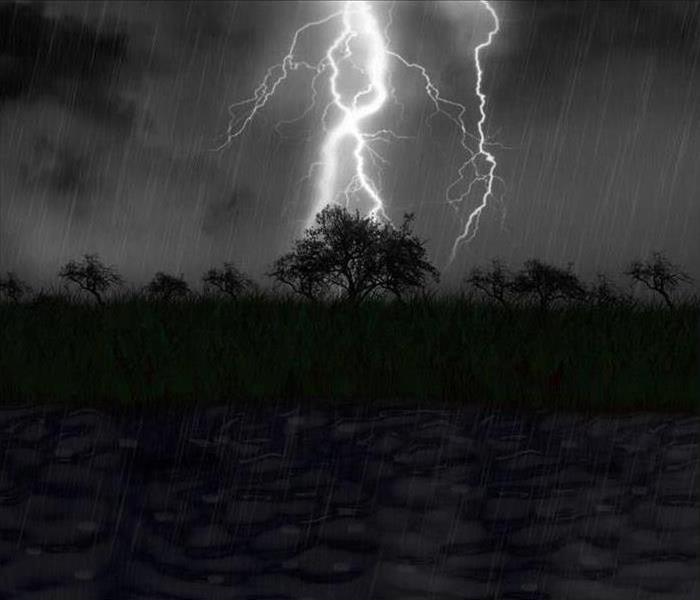 Call SERVPRO of W. Vancouver/Clark County today and let us help you put an Emergency Ready Plan (ERP) in place for your home or business!
Call SERVPRO of W. Vancouver/Clark County today and let us help you put an Emergency Ready Plan (ERP) in place for your home or business!
There are simple things you can do to minimize the impact of storms on your home and surrounding property, as shown in the following emergency planning checklist:
General home maintenance
- Check your roof regularly to make sure it’s in good condition
- Keep gutters, downpipes and drains clear
- Remove tree branches that are close to your house
- Fix any corrosion, loose fittings and rotting or termite-affected timber
- Secure loose items around your property
General home safety preparations
- Ensure your home, contents and car insurance is adequate and current
- Identify the safest room in which to shelter during a storm
- Learn how to safely turn off your power, water and gas
- Keep water containers, a camping stove and fuel safely on-hand
If you live in a flood-prone area
- Store poisons and garden chemicals well above ground level
- Identify indoor items you’ll need to raise or empty if flood threatens
- Relocate power points well above previous flood levels
Contact SERVPRO of W. Vancouver/Clark Co. TODAY to help be prepared.
(360)-254-0049
Water, Water Everywhere: A 3-Step Plan To Recover From Storm Damage
4/18/2018 (Permalink)
With little warning, homeowners in Vancouver, WA, can face water damage caused by catastrophic rains or flooding. In one year alone, water-related disasters caused over $280 billion in damages in the United States. Having a plan can make recovery from a storm much less stressful.
1. Protect Your Safety
After a flood, you may be in shock. While natural, this reaction won’t help your home recover. Flooding typically requires quick action. Ask yourself if it is safe to stay in your house. Are there live wires? Is it safe to mop up water or tear out wet carpet? If answers to these questions leave you feeling unsafe, leave the home.
2. Assess Your Options
Next, determine options for cleanup. Contact your insurance company to discuss coverage. If your house has suffered extensive damage, consider calling a professional for storm restoration.
3. Call a Professional
A storm damage cleanup and restoration company can take the burden off your shoulders by performing several services:
• Inspect and Assess. Professional cleaners often start by surveying the extent of water damage and checking for safety hazards.
• Extract Water. Powerful pumps and industrial vacuums are brought in to remove water from your home. Moisture detectors, hygrometers and infrared cameras may be used to find water hidden behind walls and ceilings.
• Dry and Dehumidify. In this step, high-speed air movers and industrial dehumidifiers help to reclaim your home. If necessary, professionals tear out wet materials to dry or throw out.
• Clean and Sanitize. Anyone who has been through a flood can tell you about the smell and fear of disease that follow. For this reason, professionals often work hard to remove odors, deodorize and sanitize your home.
• Restore. Ideally, professionals can restore your home to its formerly dry glory. Restoration can involve anything from minor repairs (tear out drywall, install carpet, repair flooring) to rebuilding entire rooms.
Storm damage may be out of your control. However, the right plan can help you take control of storm restoration.
For more information, please visit us athttp://www.SERVPROwvancouverclarkco.com/.
What To Do After a Storm Causes Roof Damage
3/29/2018 (Permalink)
High winds can do crazy things to your roofing system in Vancouver, WA. When storms cause shingles to tear off, it can be hard to know exactly what to do. You want to fix the problem before a roof leak starts, but where do you start?
Protect the Damaged Area
Your first step should be to call in a storm damage specialist. These experts will be able to help you locate the damage, come up with a repair plan and work with the insurance company. However, these specialists may not be able to get to your building right away. If you can't get professional help right away, you need to protect your roof so it doesn't get damaged further. If you want to stop a damaged roof from becoming a bigger problem, you need to use certain tools to cover the damaged area.
• Use tarps and plywood to cover any ripped, cracked or missing shingles.
• Remove weakened tree limbs to ensure they don't crash onto your building.
• Get rid of debris from the roof as this can tear up more shingles if high winds return.
Doing everything you can to protect the vulnerable part of your roof can help you avoid larger headaches. Your contractor may be able to give you more tips on how to get by until he or she can arrive.
Start a Repair Plan
Once the damaged roof has been assessed, you need to quickly enact a repair plan. If you wait too long to fix the issue, the missing shingles can turn into a roof leak. As you know, leaks can lead to major water damage that can take a lot of money to fix. It's better for you and your building if you can start a repair plan as quickly after the storm as possible.
The last thing you want after a storm is to worry about a roof leak. However, damaged shingles can lead to that exact situation. Taking the proper steps after a storm may help you mitigate your problems.
For more information, visit us at http://www.SERVPROwvancouverclarkco.com/.
Preparing Your Home For Winter Weather
9/27/2017 (Permalink)
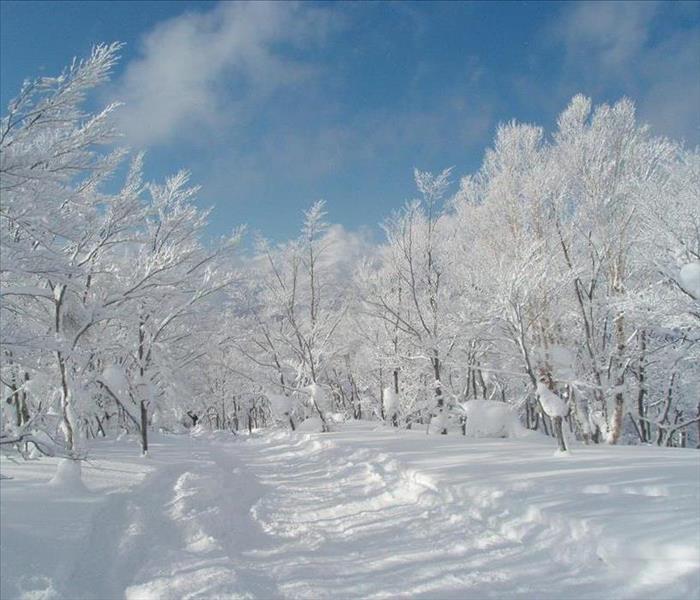 If you encounter damage to your home this winter make sure you call SERVPRO of Vancouver 24 hours a day, 365 days a year! (360) 695-4418
If you encounter damage to your home this winter make sure you call SERVPRO of Vancouver 24 hours a day, 365 days a year! (360) 695-4418
If you live in the Northeast, Midwest, or Northwest you know the drill. Four to five months of heavy clothes, seeing your breath and generally freezing outside. Sometimes even elsewhere, Old Man Winter stops in for an unexpected visit. But beyond the inconvenience and discomfort, a winter storm or other severe weather conditions can cause real damage. So it's important to think about winter preparedness.
Protecting your home is vital. A frozen water pipe can burst and flood your house or basement. An ice dam in your gutter can cause water to seep into and saturate an interior wall. And then there’s your car. Making sure it’s prepped to face winter’s worst is just as critical. After all, what would happen if a blizzard stranded you in your car?
Prepare yourself
Some winter weather tips to help you get through a severe stretch of cold:
- Stay indoors during the storm.
- Walk carefully on snowy, icy walkways.
- Avoid overexertion when shoveling snow. It’s a serious workout, and going at it too hard can bring on a heart attack − a major cause of death in the winter. If you must shovel snow, stretch before going outside.
- Stay dry. Wet clothing loses all of its insulating value and transmits the cold rapidly.
Cold-related injuries
- Watch for signs of frostbite: loss of feeling and white or pale appearance in extremities. If any of these occur, get medical help immediately.
- Watch for signs of hypothermia: uncontrollable shivering, memory loss, disorientation, incoherence, slurred speech, drowsiness and apparent exhaustion.
- If any of the hypothermia symptoms appear, get yourself (or the victim) to a warm location, remove wet clothing, and warm the center of the body first. Give the patient warm, non-alcoholic beverages if they are conscious. And of course, get medical help as soon as possible.
Prepare your home
Some tips to brace your home for a winter storm:
- Clean out the gutters, disconnect and drain all outside hoses. If possible, shut off outside water valves.
- Insulate walls and attics, and caulk and weather-strip doors and windows.
- Repair roof leaks and remove tree branches that could get weighed down with ice or snow and fall on your house – or your neighbor's. (Avoid liability for the latter.)
- Wrap water pipes in your basement or crawl spaces with insulation sleeves to slow heat transfer.
- Consider an insulated blanket for your hot water heater.
- If you have a fireplace, keep the flue closed when you're not using it.
- Have a contractor check your roof to see if it would sustain the weight of a heavy snowfall.
- Make sure your furniture isn't blocking your home’s heating vents.
- During cold spells, keep cabinet doors open to allow warm air to circulate around pipes, particularly those in the kitchen and bathrooms.
- Keep a slow trickle of water flowing through faucets connected to pipes that run through unheated or unprotected spaces.
- If your house will be unattended during cold periods, consider draining the water system.
- Avoid ice dams – where water from melted snow refreezes in the gutters and seeps in under the roof, soaking interior walls. Here’s how:
- Ventilate your attic.
- Insulate the attic floor well to minimize the amount of heat rising through the attic from within the house.
- Consider having a water-repellent membrane installed under your roof covering.
Winter Weather Preparation
9/11/2017 (Permalink)
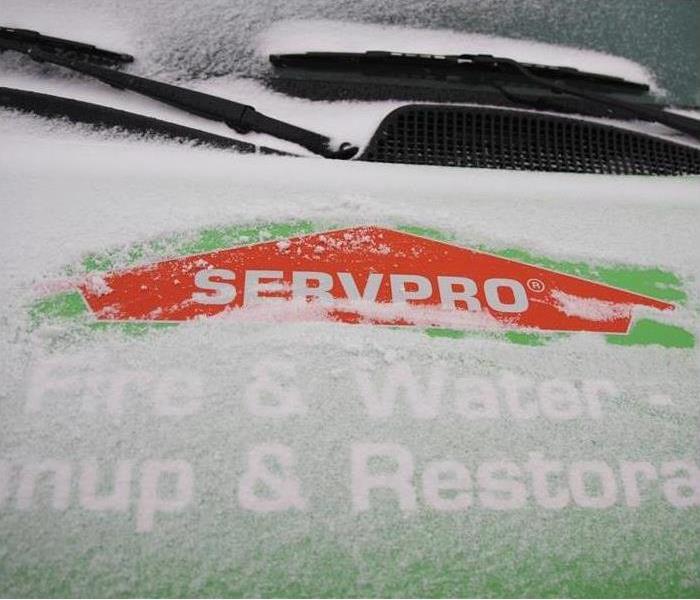 Most storm damage in the Northwest is caused by high winds and freezing temperatures. Make sure you're prepared!
Most storm damage in the Northwest is caused by high winds and freezing temperatures. Make sure you're prepared!
*Protect your pipes from freezing. Allow water to drip from faucets when temperatures dip below freezing. Wrap outdoor faucets with an insulated faucet cover or towel.
*If leaving your structure for more than a few days, consider turning off the water supply. Have a designated person checking in on your structure. Keep your home or business at a moderate temperature helping to decrease the chance of pipes freezing and breaking.
*Leave cabinet doors open to allow warm air to circulate around pipes while observing the status daily.
*Clear gutters of all debris, leaves and other objects that can lead to blockage of the gutters ultimately causing roof damage and interior water leakage/damage.
*Keep walkways and nearby storm drains clear of debris to alleviate flood hazard potentials.
Whether it is heavy winds, rain, freezing temperatures, sleet or snow, all these factors can cause costly damage. While we cannot control the weather, we at SERVPRO are here to help you take a preventative approach and help take the sting out of winter weather.
Further Questions and/or Mitigation Needs, Please Call 360-695-4418
Disaster Preparedness
9/11/2017 (Permalink)
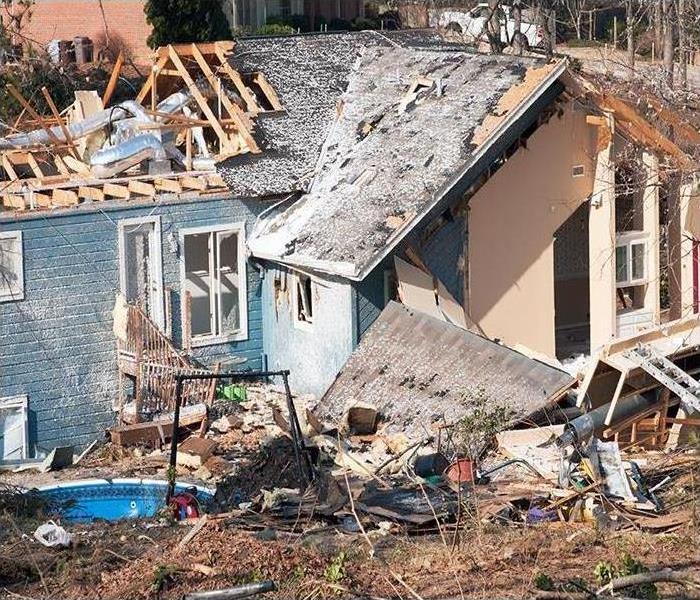 It never hurts to be prepared!
It never hurts to be prepared!
*A note from our Sales and Marketing Manager - Shelly.
In the training's and certification's that I have completed through the American Red Cross, I can tell you that it is time to prepare for natural disasters of all types and sizes.
The first step is to have a plan for all of the members of your family.
Not all disasters happen when all of the family members are at home or even in one central location together. Make a plan as to where you will all meet once it's safe.
Choose a specific contact person outside of the state that you live in. Make sure all family members know the contact person's telephone number's and email address. Each person needs to check in with that person immediately if possible. The contact person can then share with all family members the where about's of all members that have checked in.
Make sure each person knows what their role/responsibility/duty in survival/ is in the event that everyone is home when disaster strikes.
For further preparedness planning, please call Shelly of SERVPRO of W. Vancouver/Clark Co. 360-991-6977
Storm Damage and Your Roof
6/26/2017 (Permalink)
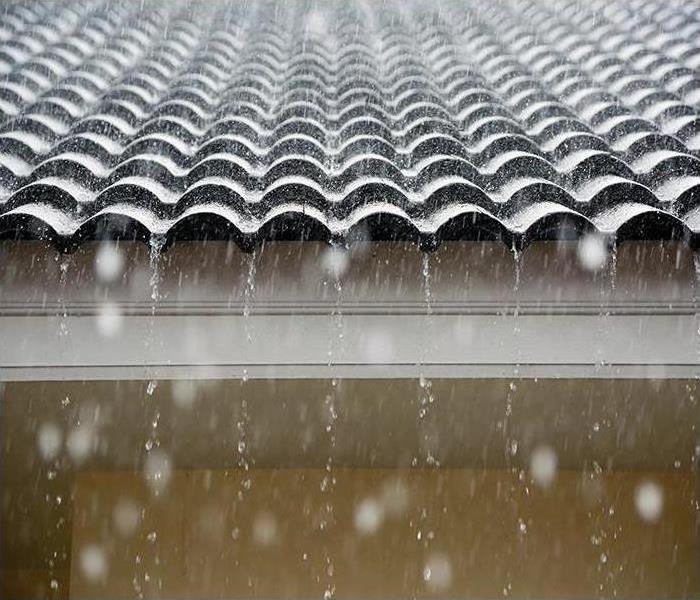 During the Summer months is the perfect time to have the roof on your home or business checked out by a local roofer
During the Summer months is the perfect time to have the roof on your home or business checked out by a local roofer
Storm Damage To Your Roof
As Summer quickly approaches us, and the cold, wet, Winter weather is leaving us for a few months. Now is the perfect time to have the roof on your home or business checked out by a local roofer. Even when there was no hail or rain produced during a storm, your roof can sustain damage. Strong winds make stress points on your roof which, over time, can weaken and be compromised. Roofs are made to resist typical winds; however, they can be damaged incrementally over years of high winds and debris blown around by the wind. It is important to fix the initial damage and replace missing shingles quickly to stop any high fuel costs and water damage that inevitably result from a roof which is damaged.
The effect that the wind has over your Vancouver home’s roof is not uniform. Areas such as the perimeter and corners of your roof are susceptible to high wind pressures and storm damage, while the center could have fewer stresses. Most wind damage begins at the edge of the roof. Anywhere the material of the roof is just a bit loose, the wind gets under it and pushes it up, therefore giving the wind more to grab onto during the next storm, which makes a peeling effect. This type of damage can begin quite small, but keep growing over time through repeated exposure to the wind.
SERVPRO of W. Vancouver / Clark Co. can be counted on to help get home or business repaired when storm damage has ravished it. With our professional training and courteous, timely work, we can help to prevent further damage to your home from intruding water by covering damaged areas with tarps or plywood for temporary protection. We then focus on restoring water damage of the attic and other affected areas. Our technicians may be able to do the roof repairs, but we can always get help from one of our roofing contractor partners to rebuild your roof to code when needed.
Being Prepared With The Red Cross
5/30/2017 (Permalink)
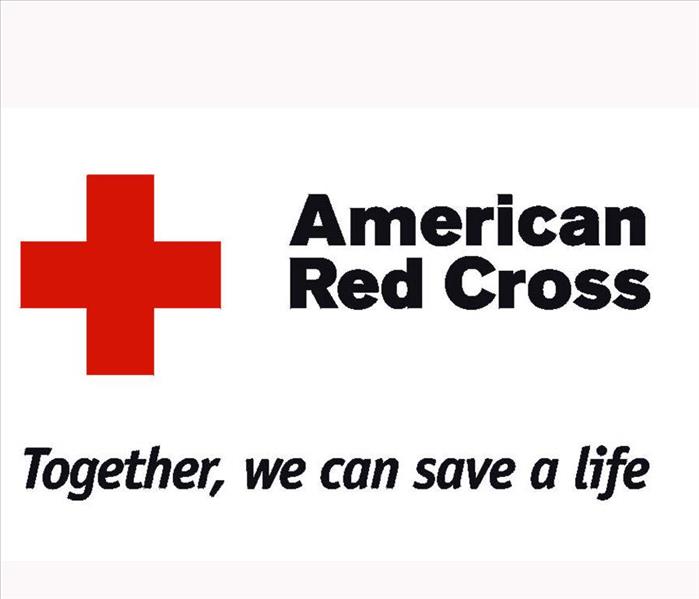 For questions about being prepared in case of an emergency, contact The American Red Cross Cascades Region @ 503-284-1234
For questions about being prepared in case of an emergency, contact The American Red Cross Cascades Region @ 503-284-1234
Are you prepared for an emergency? What will you do if you have to evacuate your home during a fire or a flood? What if you are unable to return home after an earthquake? Do you have important items gathered into an emergency preparedness kit? How will you communicate and reconnect with your family, friends and people in your life after a disaster?
There are simple steps you, your family and your community can take to ensure you are prepared for any type of disaster. The Red Cross is here to help.
Preparedness Tool Kit
The Red Cross has many tools to help keep you and your loved ones safe. From detailed information about how to plan for specific events, or more general information about preparedness, you can find it here.
Red Cross Apps
The Red Cross offers several mobile apps that put life-saving information at your fingertips. Free apps include the First Aid, Hurricane, Shelter Finder, Earthquake and Wildfire App. Each app provides instant expert advice for everyday emergencies and is available for iPhone and Android devices.
Prepare Your Workplace
Learn how to prepare your workplace for a disaster and ensure employees have the tools to help co-workers who may need immediate, emergency care. Take a free AED class at the Oregon Red Cross or join the American Red Cross Ready Rating™ program.
Schedule a Red Cross Presentation
Are you interested in making sure your family, school, co-workers and community are prepared? Attend a free class or schedule a presentation to get your community prepared before disaster strikes.
 For All Your Winter Storm Damage Restoration Needs, Call SERVPRO of E. /W. Vancouver at (360) 695-4418
For All Your Winter Storm Damage Restoration Needs, Call SERVPRO of E. /W. Vancouver at (360) 695-4418






 24/7 Emergency Service
24/7 Emergency Service

























